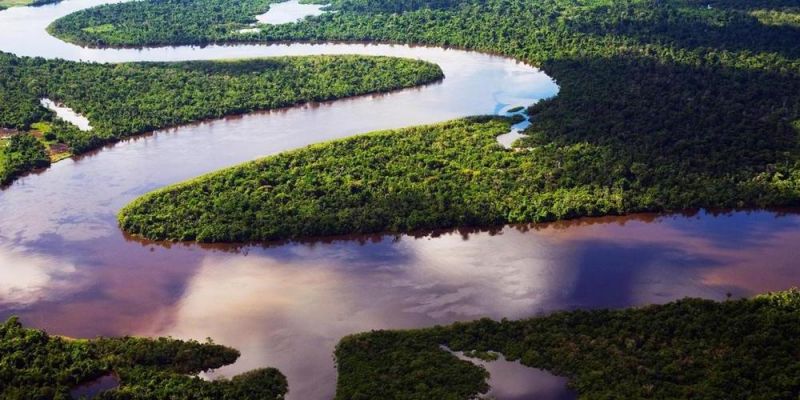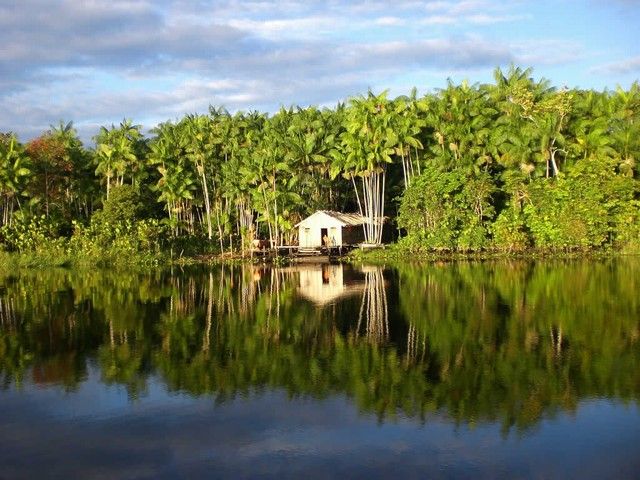Applying The Water-Energy-Food Nexus In The Amazon
Published on by Water Network Research, Official research team of The Water Network in Academic
Deforestation in the Amazon has a ripple effect through the region disrupting ecosystem services and undermining food, water and energy security.
 Brazil, Colombia and Peru share over 80% of Amazonia and combined have lost an estimated 3 million hectares of forest per year between 2001 and 2014, largely as a result of agricultural and infrastructure expansion.
Brazil, Colombia and Peru share over 80% of Amazonia and combined have lost an estimated 3 million hectares of forest per year between 2001 and 2014, largely as a result of agricultural and infrastructure expansion.
It is increasingly recognized that the loss of tropical forests and their key ecosystem services will undermine the region’s long-term economic prosperity and capacity to maintain water, energy and food security.
In addressing environmental degradation, climate change and its associated risks, Brazil, Colombia and Peru have taken important steps towards low-carbon development pathways, with a strong emphasis on forest preservation. For example, Colombia and Peru have pledged to achieve zero net deforestation by 2020 and 2021 respectively, and Brazil to end illegal deforestation by 2030.
Yet, Brazil, Colombia and Peru, among other countries in Amazonia, face a difficult challenge in balancing conservation and climate objectives while pursuing development agendas and meeting growing demands for food, water, and energy.
It is increasingly understood that reconciling these objectives and realizing sustainability commitments, (e.g. the Sustainable Development Goals; the Paris Climate Agreement) will require more holistic and coordinated policy approaches.
In this context, the water-energy-food (WEF) nexus has emerged as an important conceptual framework to improve natural resource governance. By accounting for interdependencies between water, energy and food systems, such an approach can support decision makers in evaluating resource trade-offs across different economic sectors and actors.
Applying the nexus approach in Amazonia
In applying the WEF nexus framework in Amazonia, as part of a policy coherence analysis for Brazil, Colombia and Peru, the importance of this approach for identifying key policy gaps and conflicts – in particular around competing demands on water and land resource – is further highlighted.
 The analysis shows how the envisaged expansion of planted forests, soy, sugar cane and palm oil production to meet both domestic renewable energy targets and export demands has clear contradictions with climate objectives, given their historic and ongoing expansion in Amazonia.
The analysis shows how the envisaged expansion of planted forests, soy, sugar cane and palm oil production to meet both domestic renewable energy targets and export demands has clear contradictions with climate objectives, given their historic and ongoing expansion in Amazonia.
This is evidenced most recently in Peru where 72% of the current oil palm production has occurred at the expense of forest ecosystems.
More broadly studies also point to complex links between biodiesel production and indirect land use change in Amazonia as a result of the displacement of other crops/pasture into forestland.
Similarly, the expansion of monoculture systems such as soy and sugar cane can be detrimental if it competes for water and land, drives up market prices, or displaces other crop varieties and subsistence farming systems that can contribute more directly to local food security and climate resilience.
This is particularly relevant in Brazil where increases of 700,000 ha for sugar cane and 22 million ha for soy by 2023/2024 are envisaged under current policy objectives.
Because both biofuel and food crops are predominately grown under rain fed conditions and therefore depend on renewable water sources in the Amazon basin, ongoing forest loss and climate change pose considerable food and energy security risks.
The reduced water volumes and sedimentation associated with land use change can further impact energy security linked to hydropower generation, which currently forms the backbone of electricity sources in Colombia, 64%, and Peru, 53%, and is set to expand to almost 86% in Brazil by 2024.
While these examples highlight the implications of current policy formulations in achieving water, energy and food security and broader sustainable development commitments in the region, the exercise also reveals particular limitations with this kind of assessment.
Read full article at: Ecosystem Marketplace
Media
Taxonomy
- Resource Management
- River Studies
- Climate Change
- Water-Energy Nexus
- Forestry
- Water & Energy Conservation
- Water-Energy-Food Security